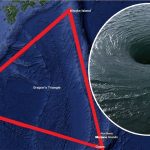Mars: The Most Earth-like Planet in Our Solar System | NASA Documentary | 1979
● Visit our main channel:
►Facebook:
This 1979 film – originally titled as “Planet Mars” – is a vintage documentary produced by the National Aeronautics and Space Administration (NASA). The film discusses what had been learned about planet Mars from Earth-based telescopes, observations from the fly-by Mariner spacecraft, and through the Viking Program’s landing and orbiter experiments. It also explains the discoveries and new mysteries relating to the planet most like Earth in our solar system.
The film was narrated by Richard Basehart.
HISTORICAL BACKGROUND / CONTEXT
Mars is the fourth planet from the Sun and the second-smallest planet in the Solar System, after Mercury. Named after the Roman god of war, it is often referred to as the “Red Planet” because the iron oxide prevalent on its surface gives it a reddish appearance. Mars is a terrestrial planet, having surface features reminiscent both of the impact craters of the Moon and the valleys, deserts, and polar ice caps of Earth.
Mars is approximately half the diameter of Earth with a surface area only slightly less than the total area of Earth’s dry land. Mars is less dense than Earth resulting in about 38% of Earth’s surface gravity.
The rotational period and seasonal cycles of Mars are likewise similar to those of Earth, as is the tilt that produces the seasons. Its orbital period is 687 (Earth) days. The solar day on Mars is only slightly longer than an Earth day: 24 hours, 39 minutes, and 35.244 seconds. A Martian year is equal to 1.8809 Earth years.
Mars is the site of Olympus Mons, the largest volcano and second-highest known mountain in the Solar System, and of Valles Marineris, one of the largest canyons in the Solar System. The smooth Borealis basin in the northern hemisphere covers 40% of the planet and may be a giant impact feature. Mars has two moons, Phobos and Deimos, which are small and irregularly shaped. These may be captured asteroids.
There are ongoing investigations assessing the past habitability potential of Mars, as well as the possibility of extant life. Of all other planets in our solar system, Mars is the most Earth-like and remains our best chance to find life, presumably microbial life, which is found in even the most extreme environments on Earth. Future astrobiology missions are planned, including the Mars 2020 and ExoMars rovers.
Vital to all forms of life on Earth is the presence of liquid water. Liquid water cannot exist on the surface of Mars due to low atmospheric pressure. The two polar ice caps appear to be made largely of water. The volume of water ice in the south polar ice cap, if melted, would be sufficient to cover the entire planetary surface to a depth of 11 meters (36 ft). In November 2016, NASA reported finding a large amount of underground ice in the Utopia Planitia region of Mars.
However, Mars is a harsh, cold world. Mars’s atmosphere, that is 95 percent carbon dioxide, is about 100 times thinner than Earth’s. Without a “thermal blanket”, Mars can’t retain any heat energy. On average, the temperature on Mars is about minus 80 degrees F (minus 60 degrees C). Loss of a protective magnetic field left the atmosphere unprotected to UV radiation and the solar wind erosion.
Early history of Mars exploration:
Starting in 1960, the Soviets launched a series of probes to Mars including the first intended flybys and hard (impact) landing (Mars 1962B). The first successful fly-by of Mars was on 14–15 July 1965, by NASA’s Mariner 4. On November 14, 1971 Mariner 9 became the first space probe to orbit another planet when it entered into orbit around Mars. The amount of data returned by probes increased dramatically as technology improved.
The first to contact the surface were two Soviet probes: Mars 2 lander on November 27 and Mars 3 lander on December 2, 1971 – Mars 2 failed during descent and Mars 3 about twenty seconds after the first Martian soft landing. Mars 6 failed during descent but did return some corrupted atmospheric data in 1974. The 1975 NASA launches of the Viking program consisted of two orbiters, each with a lander that successfully soft landed in 1976. Viking 1 remained operational for six years, Viking 2 for three. The Viking landers relayed the first color panoramas of Mars. Mariner 9 and Viking allowed better maps of Mars to be made using the data from these missions.
For more information about Planet Mars, see:
Mars: The Most Earth-like Planet in Our Solar System | NASA Documentary | 1979
TBSpA_0003
Leave A Reply
You must be logged in to post a comment.









 Paranormal
Paranormal

